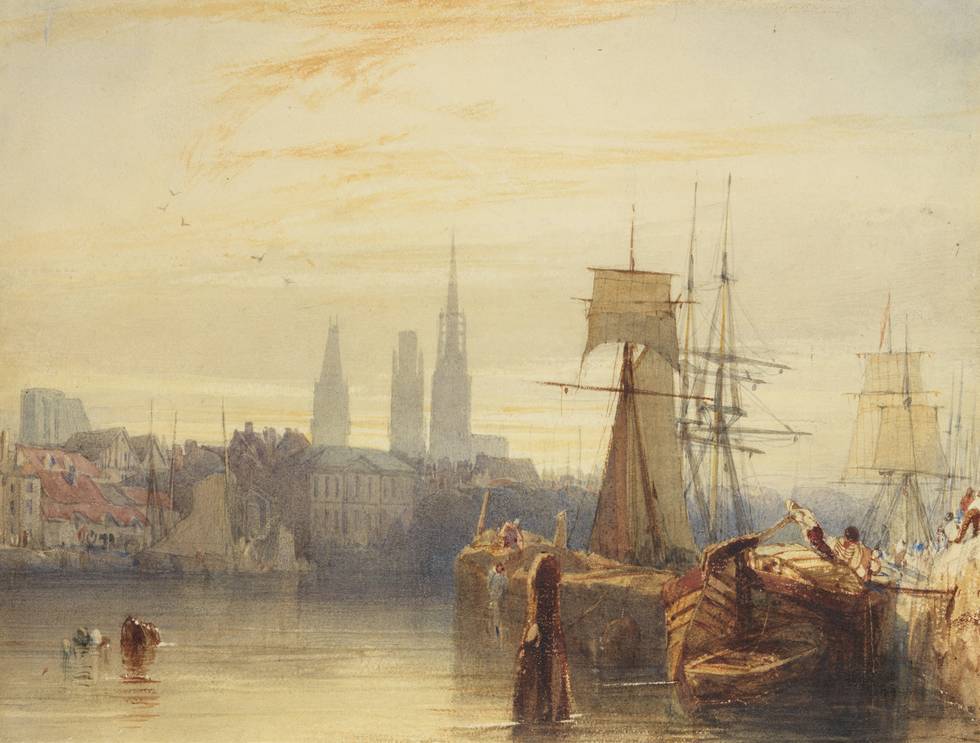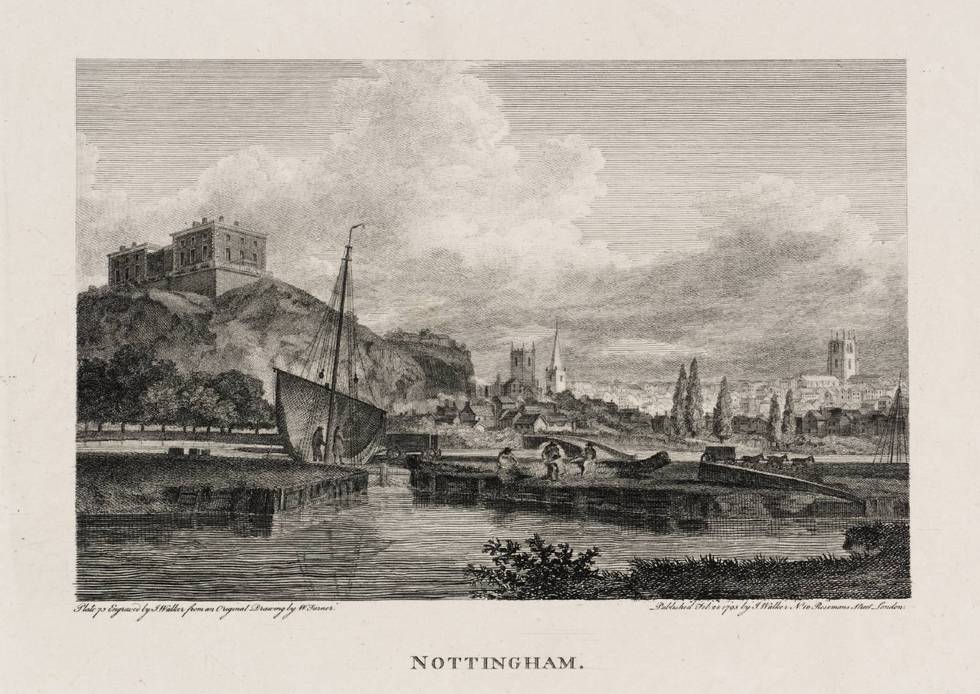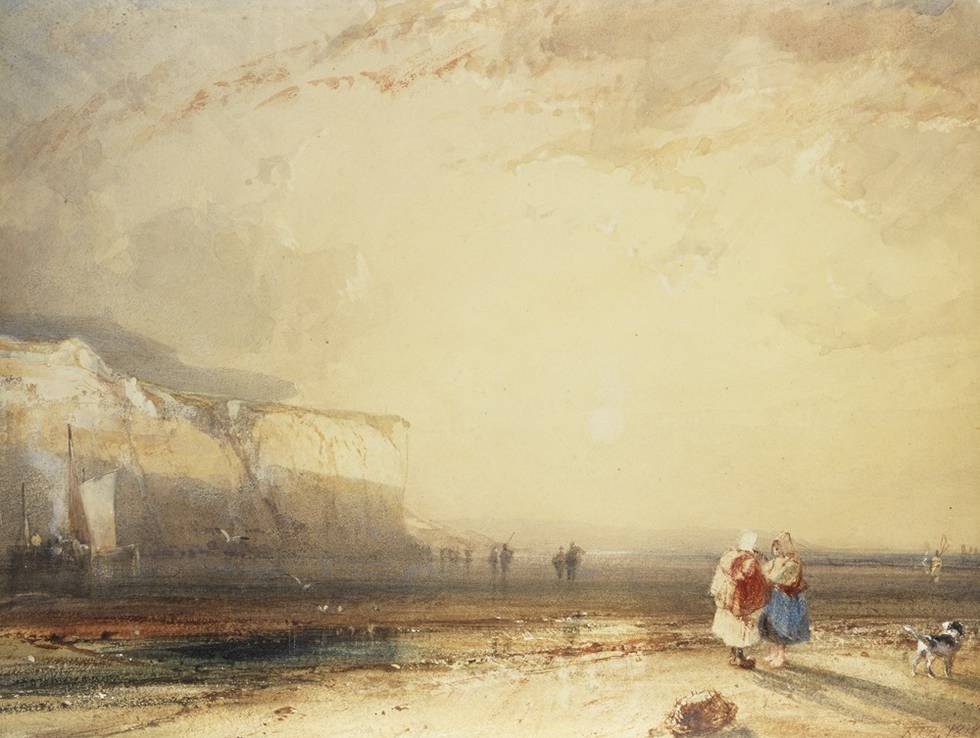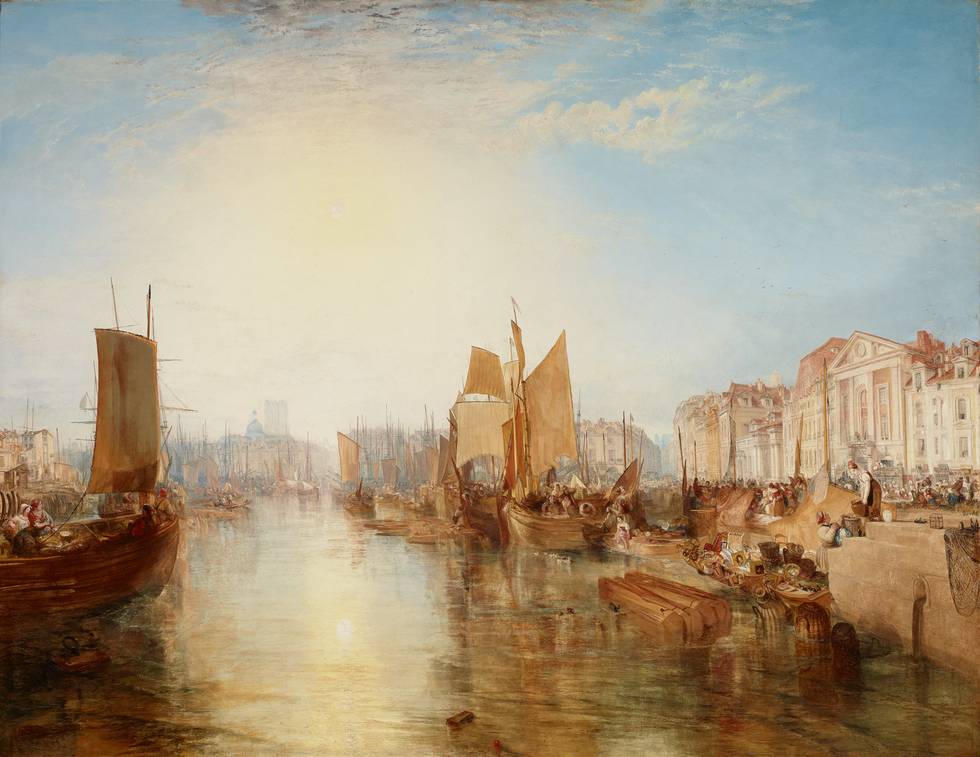On 20 September 2023, the museum opened a display, Turner and Bonington. Watercolours from the Wallace Collection, in our newly refurbished temporary display space on the ground floor of Hertford House. Here, we hold focused, collection-based displays to draw attention to less well-known areas of the collection, such as our important holding of over 100 watercolours, which have to be kept off display for most of the time due to their sensitivity to light.
From these, I selected what I consider to be the highlights of the watercolour collection – the landscapes by Turner and Bonington. There are ten paintings, beginning with four views of Yorkshire by Turner, and then six works by Bonington: three views of Normandy and two of Venice, which we have displayed alongside one unfinished painting in oil.
Turner and Bonington travelled extensively in search of landscape subjects and effects. Their finished watercolours were painted in the studio but were based on on-the-spot sketches made during extended study trips. This was a time when landscape and travel were of particular interest, fuelled by the publication of historical guide books to regions in both Britain and France. Turner was 27 when Bonington was born in 1802, and although they may never have met, they admired one another’s work. Turner singled out Bonington as one of the greatest talents among his contemporaries, while Bonington was said to speak ceaselessly of Turner. While Turner’s career was long, Bonington’s was tragically short; he died before his 27th birthday on 23 September 1828.
It is perhaps surprising, given their mutual admiration, that there has never been to my knowledge a display or exhibition that focuses exclusively on these two artists. The aim in staging this display was to set up a dialogue between these two brilliant watercolourists. Our display begins chronologically with Turner’s four watercolours of Yorkshire, which celebrate the varied terrain of this large county from coastline, woodland, moor to densely wooded gorge.
While Turner found in Yorkshire his source of creative inspiration in Britain, it was the Normandy coast that intrigued Bonington. The next three works in the display are dedicated to his scenes of the sea, coast and rivers of this remarkable area, which he chose as the site of his first sketching tour, undertaken in 1821.
Just like Turner, Bonington loved to paint sea and coast scenes and also went on extended sketching tours in search of the sublime and picturesque, not just for subjects for paintings but also illustrations for luxury historical guides.

By 1825, when Bonington painted this view of the capital of Normandy, Rouen, he had just begun to paint in oils. We can see here how like Turner Bonington had developed his technique by adding bodycolour and gum arabic to his medium to achieve the richer effect of oil paint especially in the complex surface detail of his foregrounds.

This complex composition is based around the repetition of three vertical features, two groups of masts in the foreground, and the three spires in the background. This compositional arrangement, of a city seen from across a body of water, was probably a response to Turner, whose work he most likely saw in engravings prior to his visit to London in 1825 (Nottingham).

The magnificent Sunset in the Pays de Caux, painted in the last year of Bonington’s life, may well be a response to a much larger work in oil on canvas by Turner that was exhibited at the Royal Academy in 1825 while Bonington was in London. Turner had returned to the Normandy coast at a time when Bonington’s name was directly associated with it. As in Turner’s image, the low sun and its reflection dominates the composition from off-centre. In one, the composition is framed by the arm of the harbour, the other by the diagonal created by the chalk cliff.

The final section of the display we explore Bonington’s watercolours of Venice, a site he ‘rediscovered’ as a subject for painting. We have displayed his two views of the Doge’s Palace on either side of a monumental, unfinished oil painting of the Piazza San Marco. Bonington’s scenes of Venice inspired other British watercolourists to travel to Venice, among them Clarkson Stanfield, who visited Italy on a number of occasions—two of his watercolours are here at the Wallace Collection. It was of course Turner who began to exhibit his Venetian views in 1830 and made it a subject of profound study in his later career. He also freely acknowledged his artistic debt to Bonington: he so much admired an oil painting by the younger artist of the entrance of the Grand Canal with Santa Maria Salute in the collection of his friend and patron Dr Munro that he asked to have his own paintings displayed near it.